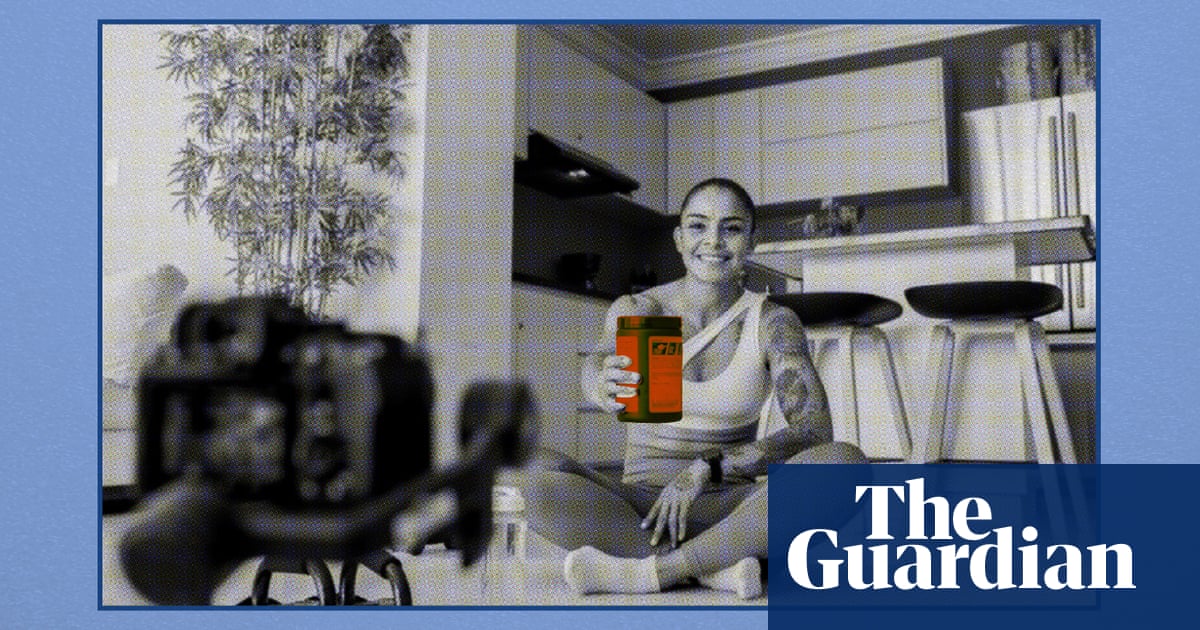Wellness advice abounds on social media: warnings about “toxic foods”, assertions that parasites are driving your sugar cravings, or claims about solving the “root cause” of bodily complaints with unproven remedies.
“Wellness woo” appears in many domains, like nutrition, dermatology, parenting and psychology, says Dr Jonathan Stea, clinical psychologist and author of a new book about mental health misinformation, Mind the Science. Common themes include distrust in mainstream medicine, the flawed belief that “natural” is always best, and an overreliance on anecdotal evidence – for instance, “I believe smearing beef tallow on my face cured my acne, so it will also cure yours!”
While some health myths are harmless (think okra water), the cumulative effect of bad advice flourishing online poses real risks to our wellbeing and scientific literacy. A MyFitnessPal survey found that 87% of millennial and gen Z TikTok users get at least some health advice from social media – even though only about 2% of it aligns with public health guidelines. It’s not just influencers fueling the problem. Debunked misinformation about vaccines and fluoride are now echoed by figures like RFK Jr, poised for positions of federal health authority.
Here’s what experts say about how to avoid health and wellness misinformation online.
Assess a source’s credibility
“Even those of us who are trained and have had experience distinguishing between misinformation and actual information” can fall for disinformation, says Irfhana Zakir Hussain, a researcher at the University of Waterloo who helped create UbiLab-Misinformation Analysis System, a system to track misinformation on social media.
To ensure what you’re seeing is true, start with verifying the content creator’s credentials.
“Just because someone lists letters after their name doesn’t automatically make them credible,” says Danielle Shine, a registered dietitian and PhD candidate researching nutrition misinformation on social media.
“Unfortunately, there are many non-credible nutrition and health-related certifications that can be obtained via questionable online courses,” says Shine. Unlike the title “registered dietitian”, which implies specialized education, training, certification and licensure, the term “nutritionist” isn’t legally regulated in the UK and most US states. That means anyone can use it, regardless of their qualifications or expertise.
“Certifications like FNTP (Functional Nutrition Therapy Practitioner), NTP (Nutritional Therapy Practitioner), or CFNC (Certified Functional Nutrition Counsellor)” may “give the impression of expertise”, says Shine, but lack the validation and credibility associated with degree-based credentials. Conversely, degree-related letters such as “B” for bachelor’s, “M” for master’s and “PhD” for advanced research training and expertise in a specific, relevant area of study are signs of basic credibility.
Look for sources with degree-based education from universities accredited by recognized bodies like the Liaison Committee on Medical Education for medical schools.
Medical doctors creating online content with cited sources are generally reliable, especially regarding their specific specialization, like endocrinologists for hormone-related conditions, psychologists for mental health, gastroenterologists for digestive health and OB-GYNs for information related to women’s health. Several experts engage in the labor-intensive and somewhat thankless process of debunking misinformation on social media, including Shine, Dr Andrea Love, Timothy Caulfield, Dr Katie Suleta and Dr Jen Gunter.
However, even qualified professionals may unethically spread pseudoscience for fame, influence and financial gain. It’s never a bad idea to follow the Sift method: slow down, investigate claims, find supporting research using reliable sites like PubMed, and trace claims back to their original context.
It’s useful to understand the various types of scientific study. Randomized controlled trials are best at illustrating a sense of causation. Meta-analysis studies engage with all the research on a certain topic and can provide some of the best available evidence for any claim. If you are still uncertain, consider reaching out to a trusted healthcare professional for a second opinion.
Understand the psychological traits that make us likely to believe misinformation
According to Stea, some factors make people more likely to believe or be susceptible to misinformation. These include personality traits like openness to experience and conspiracy mentality, which is a proclivity to endorse conspiracies. Another is narcissism, which contributes to “a lack of intellectual humility”, says Stea. People are also often drawn to statements that align with what they already believe. This phenomenon is called confirmation bias.
“It’s really rare for [health misinformation] not to contain a grain of truth,” says Dr Michelle Wong, a Sydney-based chemistry PhD and full-time skincare science educator who debunks misinformation online. Health misinformation is often oversimplified to satisfying absolutes and quick, easy solutions. Such statements leave out complexities and nuances like the size and rigor of a study, or whether an issue only applies to certain populations.
Oversimplified claims hook us by exploiting our psychology and layperson’s understanding of science, triggering our instinct to protect ourselves and others, Wong explains. “If we see something shocking and scary, our first instinct is to share it with family and friends to keep them safe.” As a result, falsehoods spread easily, going viral and creating opportunities for repeated exposure that further reinforce our sense of their veracity.
after newsletter promotion
It’s easy to trust pseudoscientific claims shared by influencers with whom we’ve developed parasocial trust – especially via video formats like TikTok and Instagram Reels. “Humans are social creatures,” notes Wong. “We just tend to trust people who seem to have our best interests at heart.”
If you’re worried your algorithm is showing you too much nonsense, reset your TikTok or Instagram recommendations.
Assess influencers’ purposes when it comes to sharing information
Some influencers share misinformation out of a genuine, if misguided, belief that it’s true. Others profit from ad partnerships or sales of related products. If an influencer’s income depends on sales, that might not always mean their advice is incorrect, but they are probably biased. Notice when influencers are selling non-evidence based products like books endorsing restrictive diets or supplements that lack safety and efficacy testing. If a research study is quoted, check that it is legitimate and really relates to the specific product rather than just some of its elements.
Employ critical thinking when an influencer makes unfounded claims about large-scale, secret conspiracies. “Politically motivated conspiracy theories that sow distrust in public institutions and governments and hospitals” might be the most insidious type of health misinformation, says Zakir Hussain. Public health has undeniably been undermined by corporate malfeasance, mismanagement and underfunding. Systemic issues like profit-driven negligence and regulatory failures deserve critique. But when influencers go down conspiratorial rabbit holes, such as suggesting the government uses fluoride to inhibit free thinking, it may speak more to their desire to be perceived as compelling vigilantes than real problems.
Identify the rhetorical tactics people use to spread misinformation
Watch how influencers handle criticism. One misinformation giveaway is the “shill gambit”, which Shine describes as “a deflection strategy to avoid genuine debate”.
Rather than engaging with valid questions or evidence-based criticism, influencers dismiss critics – often qualified professionals – by accusing them of being “paid by big pharma or big food”, says Shine. This shifts the focus from their claims to the person presenting the evidence, leveraging fears of corporate influence and “undermining the validity of information presented”, Shine explains, even when that information is sound.
Shine notes that “avoiding tough questions, deflecting valid critique, or blocking dissenting voices” can signal an inability to defend claims. Qualified professionals, by contrast, typically maintain respectful, evidence-based discussions.
Other tactics include manipulative emotional appeals, often about threats to children or babies; offering one-size-fits-all health hacks; and insisting that illnesses have one “root cause” when most chronic diseases are caused by an interplay of multiple factors, like genetics, lifestyle, environment and other social determinants.
Misinformation is rife and often appealing, but we are all capable of spotting false wellness claims by maintaining a skeptical, science-based perspective as we scroll. “If you see something that is very alarming or sensational, usually it really only takes a quick Google search to see if it’s true,” says Zakir Hussain.










